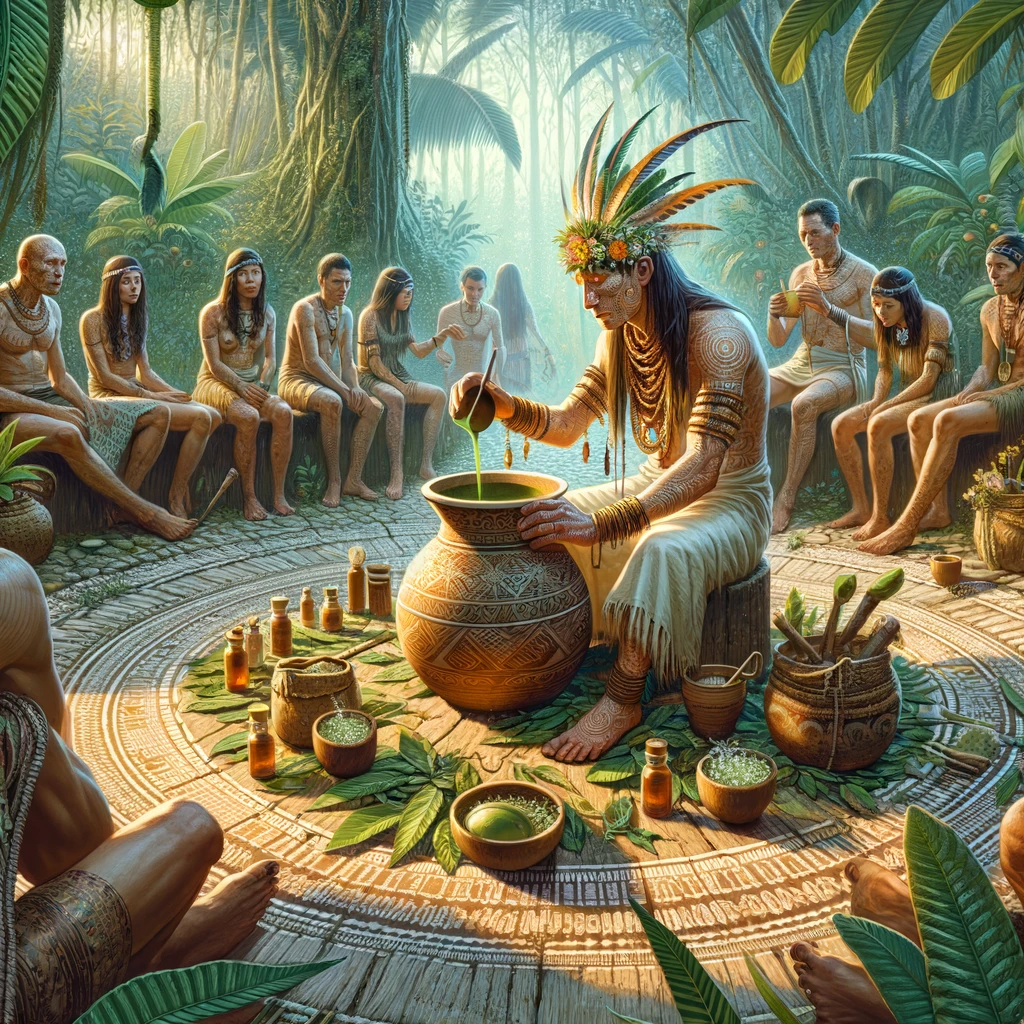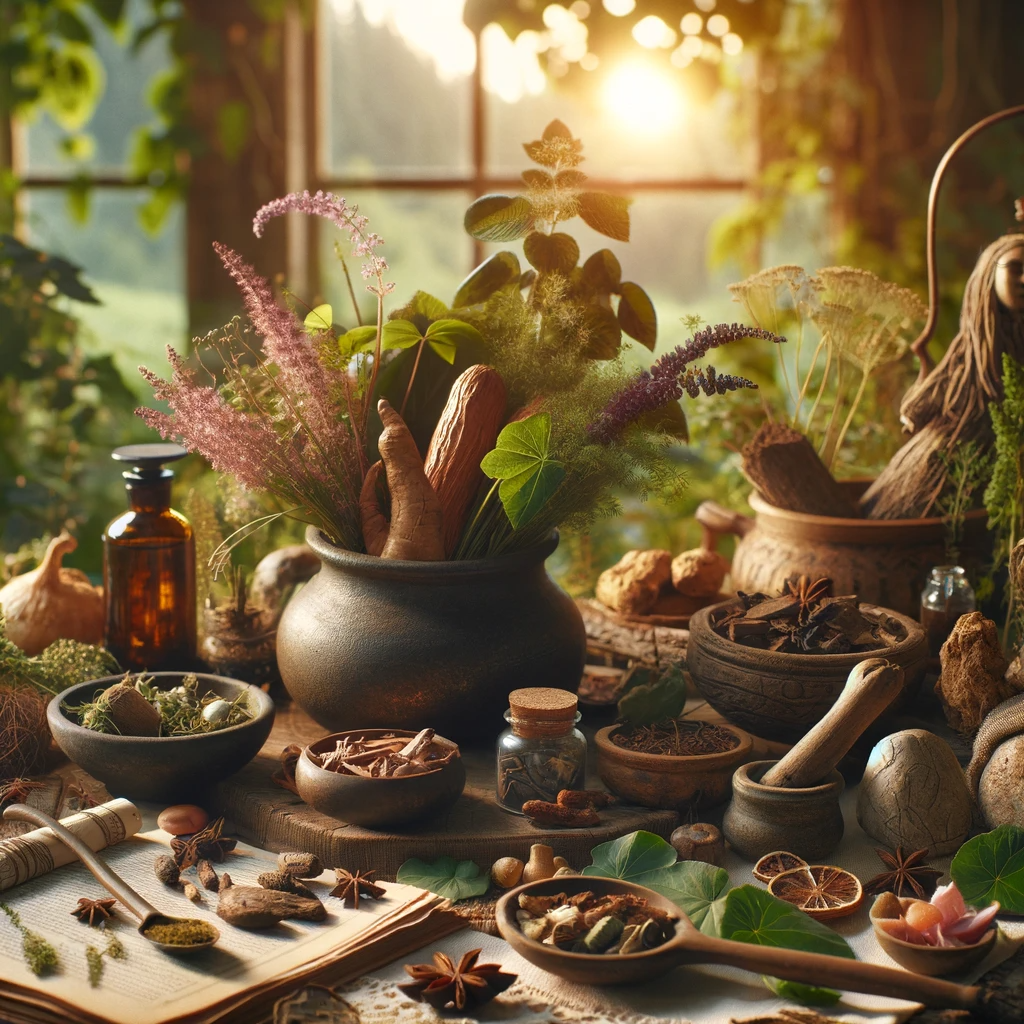Plant Medicine and Shamanism: Healing with Ayahuasca, Peyote, and More

Since ancient times, shamans have communed with the spirit of certain plants to produce powerful medicinal brews and sacraments. These sacred botanicals unleash healing, divination, and visionary states of consciousness during ceremonies. While controversial in modern society, plant medicines remain at the heart of shamanic traditions worldwide. Their responsible use in guided rituals can help treat depression, addiction, trauma, and provide spiritual awakening.

Common Shamanic Plant Allies
Diverse indigenous cultures have discovered and ritualized many psychoactive plants. Some major examples include:
- Ayahuasca – This vine + chacruna leaf tea from the Amazon induces intense psychedelic visions and spiritual experiences that release trauma and addictions.
- Peyote – North American shamans use this small spineless cactus containing mescaline to embark on all-night vision quests for healing and wisdom.
- Psilocybin Mushrooms – Sacred mushrooms expand consciousness and uncover mystical insights through their psilocybin content. Used traditionally in Mexico and Siberia.
- Iboga – The root bark of this African shrub brings powerful psychedelic visions and life review. Used in initiatory rites. Alleviates addiction.
- Cannabis – Cannabis has been involved in spiritual ceremonies and inner explorations throughout Asia, Jamaica, and India due to its consciousness altering effects.
- Tobacco – Indigenous peoples of the Americas use tobacco shamanically to offer prayers and blessings, seal agreements, or send manifestations on their way.
- Kratom – Shamans in Southeast Asia use the psychoactive leaves of Mitragyna speciosa as a painkiller, mood enhancer, and ritual offering.
- Kava – This root from the South Pacific is made into a ceremonial intoxicating drink to induce tranquility, mediate disputes, and connect with ancestors.
These and countless other visionary plant technologies should be approached with care and wisdom in shamanic practice.
Shamanic Plant Medicine Traditions
- Preparation – In many cultures shamans undergo extensive training to ritually harvest, process, and prepare sacred plant brews guided by the plant spirit’s teachings.
- Ceremony – Plant medicines are consumed intentionally in elaborate ceremonies using purification, chanting, offerings, protection, and divination to align energies and set intention.
- Healing – Shamans guide participants into mystical states where plant spirits facilitate energetic healing, soul retrievals, access to archetypal realms and spirit communication.
- Initiation – Psychoactive plants are used in rites of passage to introduce adults into mystical realms of ancestors, spirits, and deities to receive wisdom as spiritual elders.
- Oracular Visions – The enhanced state of consciousness provides divinatory visions and revelations used for guidance and revealing causes of affliction or imbalance.
- Sacrament – Plant sacraments connect human consciousness to the web of life, sacred mysteries, and directly experience theology rather than think it.
- Connection – The plant’s spirit and consciousness merges with the shaman’s to enable access to knowledge about healing specific conditions otherwise unattainable.

Benefits and Risks of Plant Medicine
Potential benefits of shamanic plant ceremonies include:
- Resolving trauma, PTSD, depression, anxiety, addiction and pain by uprooting subconscious patterns.
- Stimulating mystical states and new perspectives that bring purpose, creativity, and zest for living.
- Learning from plant, animal, ancestral, and elemental spirit teachers attracted during the journey.
- Feeling deeply connected with nature, community, the cosmos, and one’s spiritual essence.
- Receiving divine visions, messages, and guidance through expanded awareness.
- Powerful personal insights and breakthroughs due to elevated consciousness.
- Accelerated personal growth and discovery of one’s gifts and soul mission.
However, potential risks if improperly used include:
- Psychological distress – Plant medicine can surface suppressed content which unprepared users have difficulty integrating.
- Physical side effects – Vomiting, dizziness, elevated heart rate. Existing health conditions may be contraindicated.
- Bad trips – Anxiety, paranoia, confusion, fear from uncontrolled visions. Ritual guidance is key.
- Behavioral risks – Impaired judgement under the influence can lead to accidents, recklessness.
- Cultural appropriation – Indigenous traditions taken out of context, rather than syncretic fusion.
- Legal issues – Many plant medicines are controlled or banned substances depending on the country.
With careful screening, preparation, intention-setting, and integration, plant medicines can be powerful catalysts for spiritual development and healing.

FAQ About Shamanic Plant Medicine
Q: What precautions should someone take if planning a shamanic plant medicine ritual?
A: Careful screening for contraindicated mental & physical health issues. A trusted, experienced shamanic facilitator to guide the journey. Integration support afterward.
Q: How essential are plant medicines to practicing shamanism?
A: Not all shamanic traditions use plants. Consciousness expansion techniques like drumming exist. But plants are part of many indigenous rituals.
Q: Can plant medicines cure illnesses or replace prescription medications?
A: They may provide spiritual healing but caution is advised. Work with your doctor and use commonsense discernment. Don’t abruptly stop medications.
Q: Is it cultural appropriation for Westerners to use plant medicines from indigenous tribes?
A: It depends. Respectfully learning cross-cultural techniques for personal growth is different than stealing closed rituals without permission.
Q: Do the plants have a spirit or consciousness shamans communicate with?
A: Many shamanic cultures understand plants, especially psychoactive ones, as conscious beings with teachings and personalities to respectfully learn from.
Q: Can plant medicine ceremonies induce long-lasting changes?
A: Integrating insights over months and years allows lasting improvement of mental patterns, lifestyle choices, and spiritual understanding of self and reality.
Q: Are plant medicine retreats safe in countries where the practices are illegal?
A: Seek reputable centers with qualified facilitators. But recognize the legal risks you assume traveling to countries where it is prohibited.
Q: What is an ayahuasca purge and why does it happen?
A: Purging vomit and diarrhea can happen as the body releases toxins and stagnant energies. It is considered part of the healing process.

